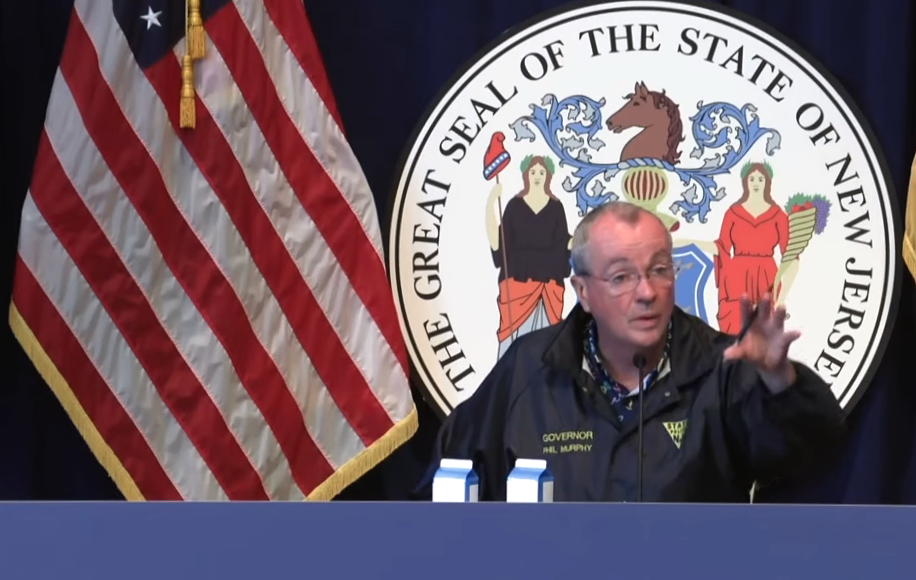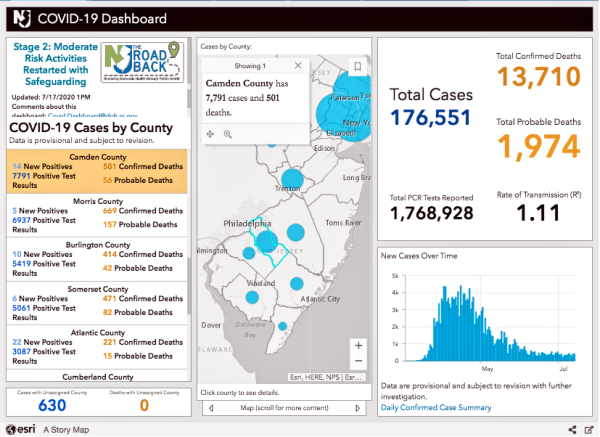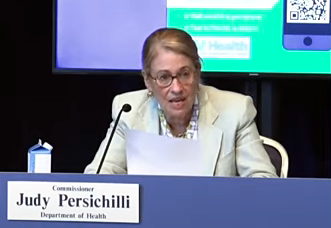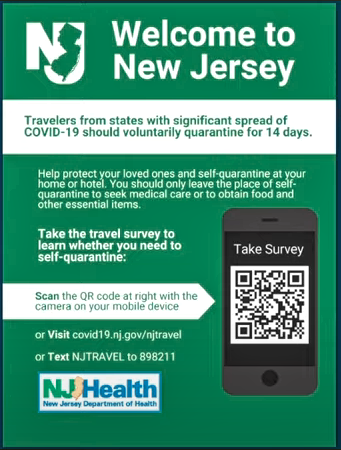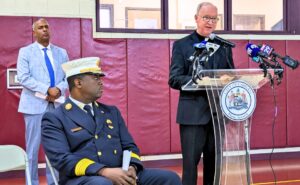Plus: New Jersey will roll out its out-of-state health data travel app Monday, and Governor Murphy calls upon charities and businesses to help the state end its digital divide for students.
By Matt Skoufalos | July 17, 2020
Another 202 New Jersey residents have tested positive for novel coronavirus (COVID-19), bringing the statewide total to 176,551 cases, Governor Phil Murphy reported Friday.
Sadly, 20 more residents have perished from complications related to the virus, bringing the statewide death toll to 13,710 lives lost during the pandemic.
Of those 20 new deaths, 7 occurred in the past 5 days; 13 in total occurred during July 2020.
In addition to those lab-confirmed fatalities, the state also recognizes 1,974 probable COVID-19-related deaths.
Throughout New Jersey, 844 people are hospitalized with a case of COVID-19; 397 tested positive for the virus, while 447 others are awaiting confirmation of their symptoms. Among those patients, 139 are in intensive or critical care, and 65 of ICU and critical-care patients (46 percent) are on ventilators.
Rate of transmission (Rt) up to 1.11, spot positivity highest in South Jersey
The statewide average of COVID-19 spot positivity testing stood at 1.66 percent July 13; in South Jersey, it’s nearly double, at 3.03 percent.
On July 15, Rt, or the rate of transmission of new COVID-19 cases, increased to 1.11, up above a week-ago high of 1.10.
That figure means that each new COVID-19 patient is infecting more than one other person, on average—which means the virus is spreading.
The lowest recorded Rt since the mid-April COVID-19 spike in New Jersey was 0.62, logged on June 9.
New Jersey Health Commissioner Judy Persichilli said that “several of our counties have reported increases in new cases associated with parties of younger individuals.”
New Jerseyans aged 18 to 29 comprise 22 percent of all COVID-19 cases, more than double the 12 percent of cases for which they accounted in April.
Murphy said the growth in new cases is attributable to indoor parties, outbreaks at long-term care sites, and residents traveling to or from hot-spot states.
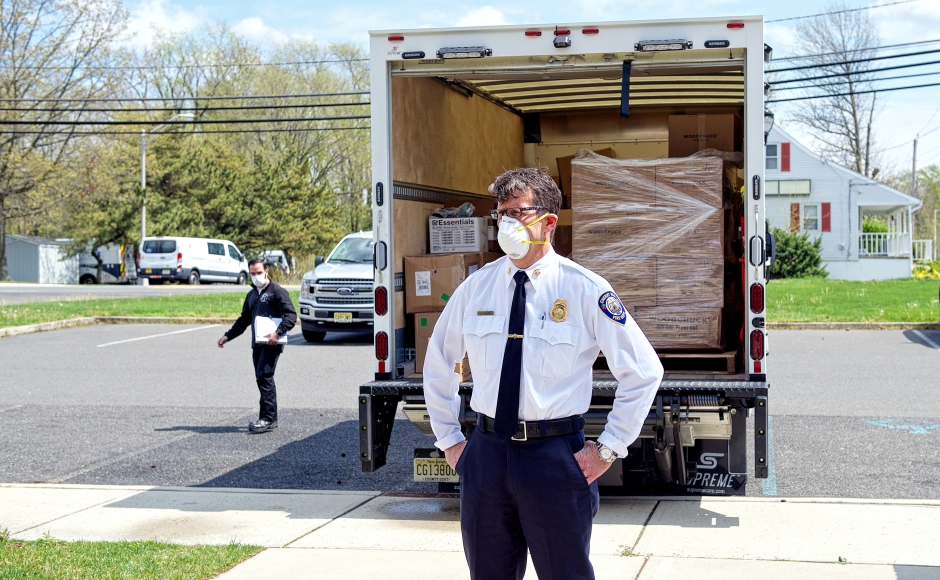
At the Camden County Office of Emergency Management, Cherry Hill Fire Chief Chris Callan oversees a delivery of personal protective gear for long-term care sites. Credit: Rich Ratner.
Long-term care accounts for almost half of all deaths, a fifth of those infected
Across New Jersey, 558 long-term care (LTC) centers have reported at least one case of COVID-19, and account for 37,181 infected patients and staff, or 21 percent of total cases.
That includes 24,523 residents and 12,658 staffers sickened by the virus, as well as 6,643 lab-confirmed resident deaths (49 percent of the statewide total) and 120 facility-reported staff deaths.
Of 654 veterans residing in a state-run home, 388 residents have tested positive for COVID-19, and 146 have died from complications related to the virus. Six veterans presently are hospitalized with COVID-19, and 240 have recovered from the virus.
At state-run psychiatric facilities, 213 of 1,237 patients and 507 staff members have tested positive for COVID-19. Seven staffers and 13 patients have died from complications related to the virus.
To date, 53 New Jersey children aged 1 to 18 have been diagnosed with pediatric multisystem inflammatory syndrome, Persichilli said; no new cases since earlier this week.
All have tested positive for an active COVID-19 infection or the presence of COVID-19 antibodies, indicating exposure to the virus. Two children are still currently hospitalized. No deaths have been associated with this syndrome in New Jersey.
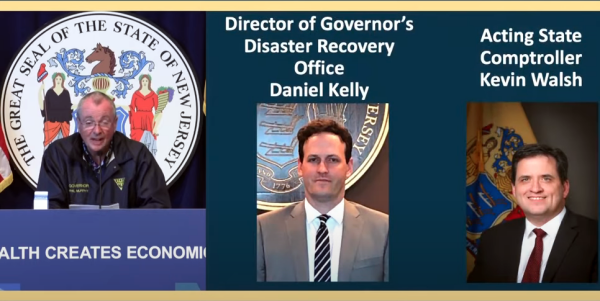
New Jersey established a Governor’s Disaster Recovery Office (GRDO) to track COVID-19 spending and use of funds. Credit: NJ Pen.
Murphy establishes disaster recovery, compliance oversight czars
To ensure public confidence in the disbursement of funds used in New Jersey’s pandemic efforts, Murphy announced the establishment of a Disaster Recovery Office and Compliance Task Force.
Acting state Comptroller Kevin Walsh will oversee the compliance task force; Dan Kelly, executive director of the Office of Recovery and Rebuilding (ORR), will lead the Governor’s Disaster Recovery Office (GRDO), which will absorb the ORR.
Among its responsibilities, the GRDO will develop a transparency website to track “eligible and planned uses of any funds disbursed by the federal or State government to help New Jersey residents, businesses, non-profit organizations, government agencies, and other entities respond to or recover from the COVID-19 pandemic,” Murphy said in a statement.
“We are fighting for every possible penny of COVID-19 relief, and every penny we receive and properly invest in our recovery is one we don’t have to borrow,” Murphy said.
The task force also will report on disbursement of COVID-19 recovery funds and administration of COVID-19 recovery programs, reviewing COVID-related procurements of more than $150,000, and establishing a monitoring program “to ensure state agencies guard against fraud, waste, and abuse of any COVID-19 funds,” according to the statement.
NJDOH to roll out travel advisory app
On Monday, the New Jersey Department of Health will launch an electronic survey to collect information from air travelers at their points of departure and while en route to New Jersey.
The survey will inform participants of which U.S. states are affected by the New Jersey-New York-Connecticut tristate travel advisory, and will provide New Jersey’s self-quarantine instructions via the state website.
Respondents’ information will be transmitted to county health departments.
Health officials will follow up with travelers, asking them to self-quarantine, helping them get tested, and connecting them to public supports as needed, Persichilli said.
New Jersey seeks to close digital divide ahead of school plans
On Thursday, Murphy announced a statewide plan to help New Jersey’s neediest schoolchildren bridge the digital divide that has affected remote instruction during the pandemic.
The governor has allocated $10 million in state reserves from federal CARES Act Elementary and Secondary School Emergency Relief (ESSER) funds as well as $44 million from its Coronavirus Relief Fund (CRF) to districts that need help delivering Internet connectivity and digital devices.
“After considering other available district funding sources and estimating need based on June 2020 survey data and low-income enrollment data, the DOE estimates that the cost to close the digital divide is approximately $54 million,” the governor’s office noted in a memo.
“We take all constituents in this process of getting back to school deadly seriously, and we mostly look at this through the eyes of our kids,” Murphy said in Friday’s briefing.
“No matter what a given district’s plan looks like, the digital divide was a bone in our throat in this state; frankly, in this country,” he said.
The governor said Friday that officials are “pleading to philanthropic and corporate folks” to help resolve the issue amid the uncertainty of New Jersey securing additional federal aid.

